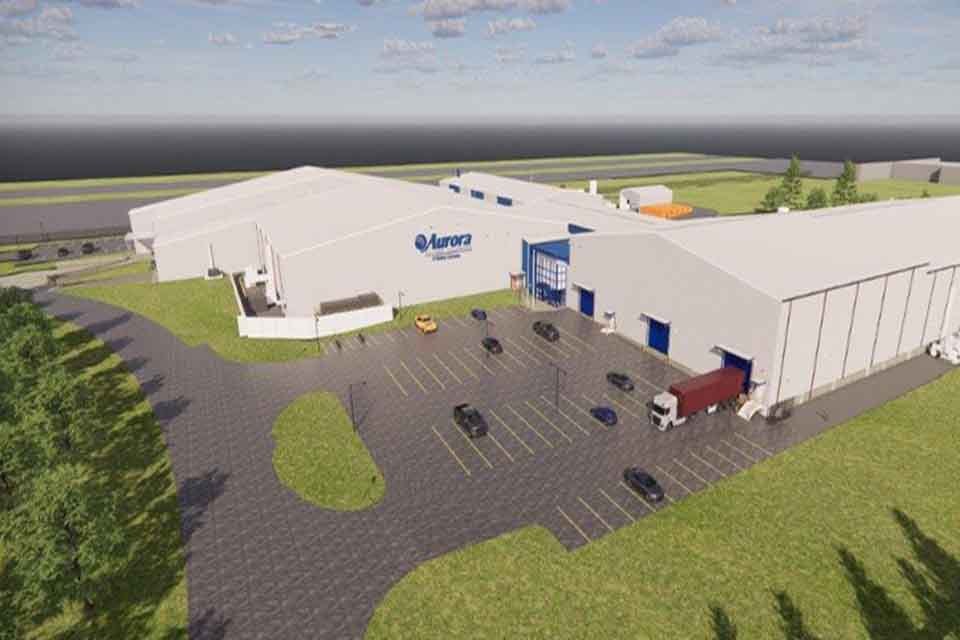Aerospace
Boeing’s Aurora Flight Sciences Expands Columbus Plant by 50,000 Sqft

Aurora Flight Sciences, a subsidiary of Boeing, has launched a significant expansion of its manufacturing facility near the Golden Triangle Regional Airport in Columbus, Mississippi.
This ambitious project will add 50,000 square feet of new space, renovate 40,000 square feet of the existing facility, and introduce advanced automation equipment, robotics, and non-destructive inspection technologies. mcas boeing enhancements will support the growing demand for Aurora’s aerospace systems business.
Since its establishment, Aurora Mississippi has specialized in the production of advanced composite components and assemblies for both military and commercial aircraft. The company first opened in 2005 at Mississippi State University’s Raspet Flight Research Laboratory in Starkville before relocating to its current site in Columbus two years later.
Initially occupying 21,000 square feet, the facility has since grown to encompass over 120,000 square feet, featuring cutting-edge manufacturing technologies such as automated fiber placement. Aurora’s latest expansion is a strategic investment aimed at increasing production capacity for composite components like boeing titanium used in executive jets and the MQ-25TM Stingray composite skins, a key project for its parent company, Boeing.
Additionally, the facility will produce components for NASA’s X-66 sustainable flight demonstrator aircraft, further diversifying its portfolio. Currently employing around 100 full-time staff in Mississippi, Aurora plans to hire more than 60 additional team members by the end of 2025.
Aurora’s expansion project underscores its commitment to Mississippi’s growing aerospace and advanced manufacturing sector. The company maintains strong partnerships with Mississippi State University (MSU) and East Mississippi Community College (EMCC), contributing to research, higher education, and workforce development in advanced manufacturing.
Additionally, Aurora actively supports local K-12 STEM education through summer camps and collaborates with high school vocational education programs. The expansion and renovation project will be carried out in phases over the next two years, with completion expected by 2026. This development marks a significant milestone in Aurora’s ongoing growth and its role in advancing aerospace manufacturing in Mississippi.

Aerospace
When Ratan Tata was denied entry to the airfield at the Aero India show, he waited

During our visit to Aero India 2019, we had the unexpected opportunity to see Ratan Tata at the event, which was a thrilling moment for us. However, there was a surprising hiccup when the security staff didn’t allow him to enter due to a lack of a security pass.
Despite this, he remained calm and patiently waited for about 20 minutes until a member of the Tata team brought him the required pass, after which he calmly proceeded inside. It was a humbling sight, showcasing his composed demeanor even in such situations.
Ratan Tata ji is not only a renowned industrialist but also a trained pilot, holding a pilot’s license. In 2007, he became the first Indian civilian to fly the F-16 Falcon during the Aero India show in Bangalore—a proud moment for the nation.
His passion for aviation extended beyond flying, as he played a key role in shaping India’s aerospace industry. Under his leadership, Tata ventured into manufacturing and maintaining aerospace components while upholding its legacy of quality. Notably, Tata’s collaboration with Airbus to develop and manufacture the C295 aircraft is a testament to its growing influence in the sector.
-

 Aviation2 months ago
Aviation2 months agoMicrosoft Flight Simulator Raises $3 Million to Bring Back the An-225 Mriya
-

 Airlines2 months ago
Airlines2 months agoQantas Engineers Stage Walkout Over Cost of Living Concerns
-

 Airlines2 months ago
Airlines2 months agoQatar Citizens Can Travel to the United States Without a Visa
-

 Aviation2 months ago
Aviation2 months agoQatar Airways bans these new Electronic Devices on plane
-

 Airlines2 months ago
Airlines2 months agoJapan Airlines Rolls Out Free Domestic Flights to International Passengers
-

 Defence2 months ago
Defence2 months agoWhich Country Has the Largest Fleet of Fighter Aircraft?
-

 Airport2 months ago
Airport2 months agoWestern Sydney Airport Welcomes Its First Plane After 6 Years of construction
-

 Aviation2 months ago
Aviation2 months agoDid you know ? Once Boeing 747 carried 1088 passenger in 1991








